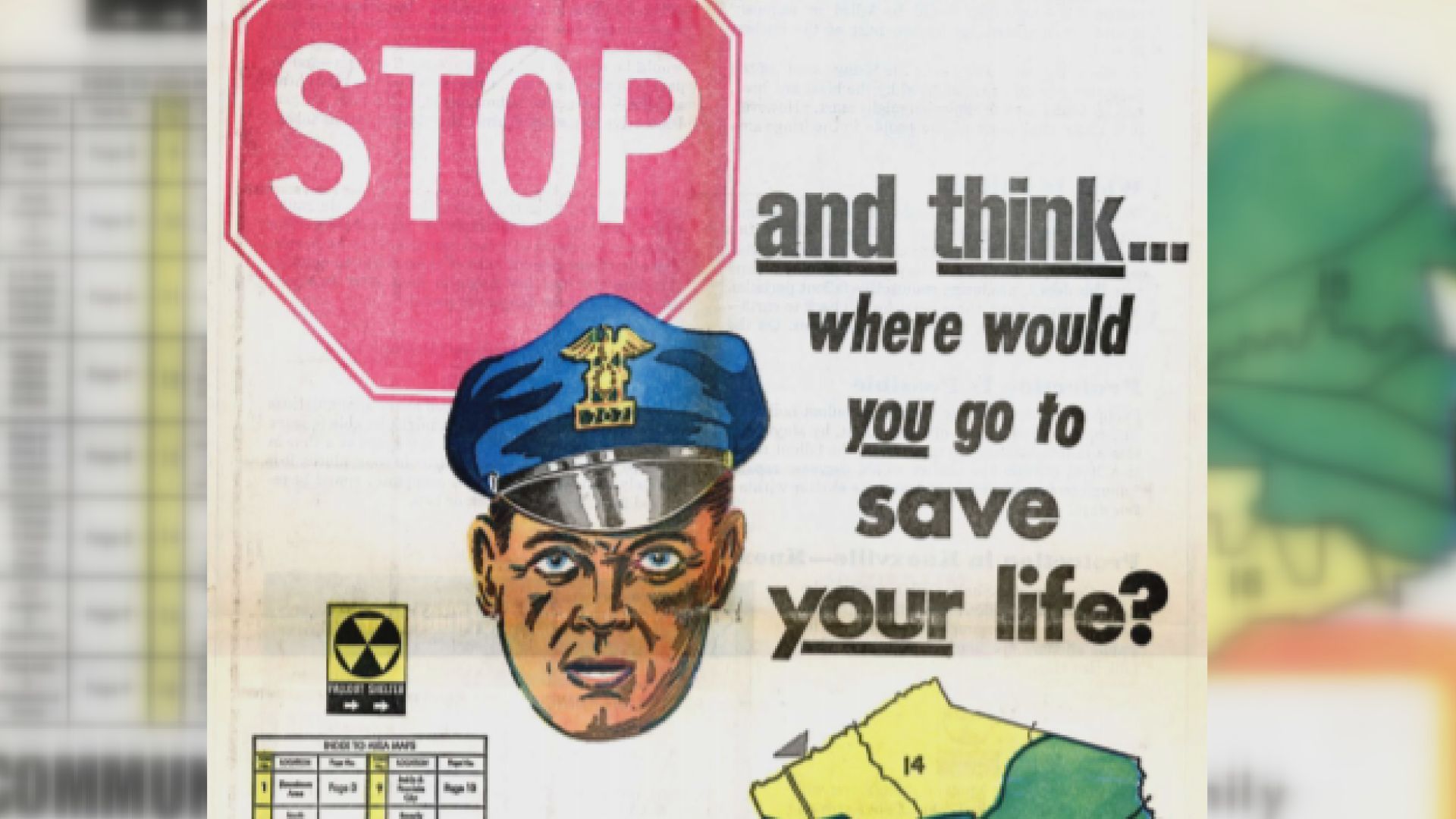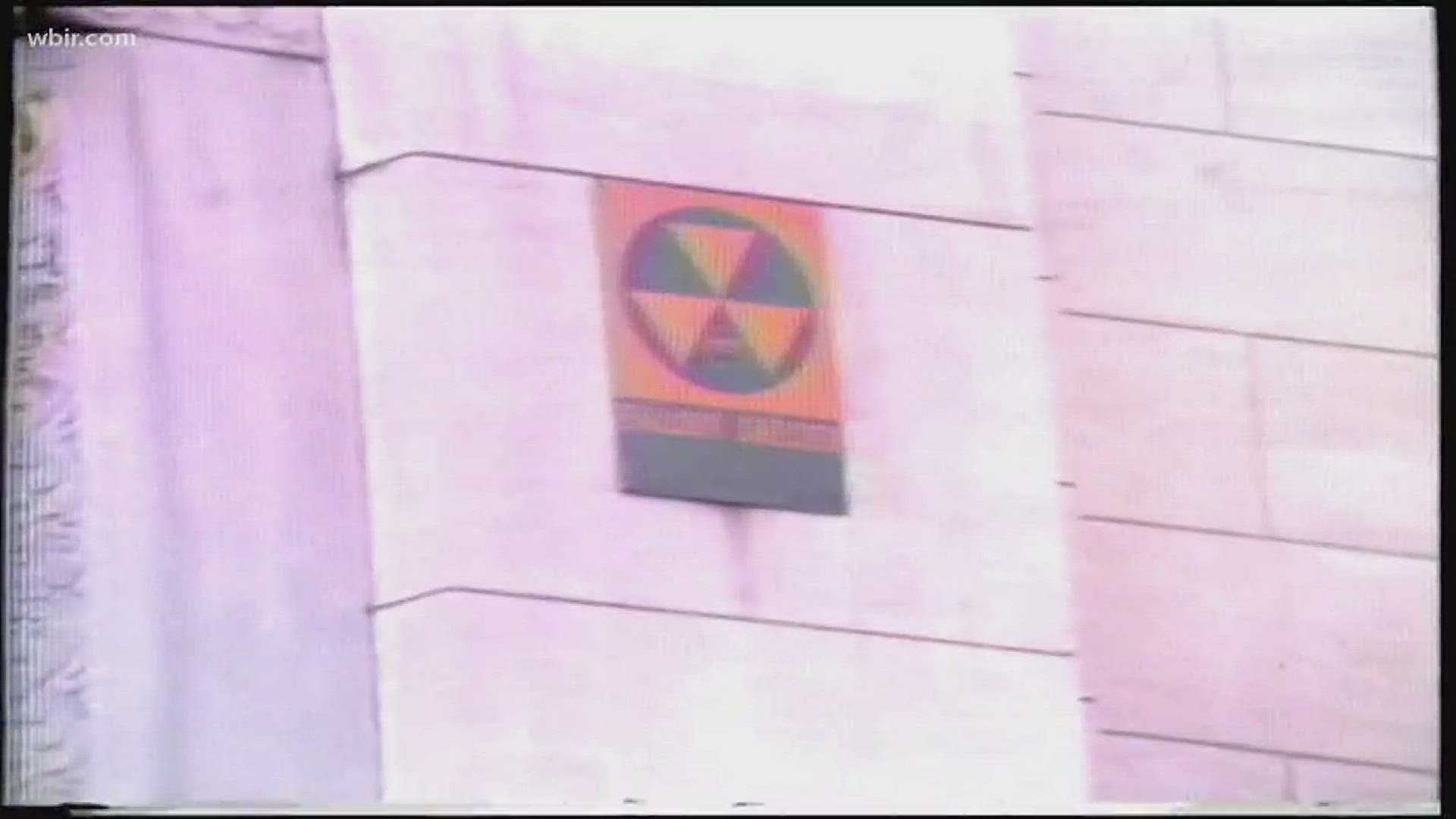Over the weekend, officials mistakenly warned residents in Hawaii of an incoming missile, sending many people scrambling for cover. Though the scare ended up being a false alarm, it did bring the nation’s preparedness for a nuclear attack back into focus – specifically, fallout shelters.
Many people remember seeing the yellow and black indicators of a fallout shelter, and the duck-and-cover drills that came with them at the height of the Cold War.

At one point, there were several hundred fallout shelters across Knox County – inside schools, churches and hospitals. The Knoxville News Sentinel published a guide to finding the nearest shelter in 1969 – in bold letters, it asks: Where would you go to save your life?
“Back during the Cold War, there was a tremendous effort on the part of making the public aware and putting in fallout shelters,” said Ray Smith, recently retired historian for the Y-12 National Security Complex in Oak Ridge.

He said because of the installation’s work on nuclear weapons, everyone around understood it would be a likely target in an attack. Shelters were stocked for people to spend a few weeks inside if they needed to wait out nuclear fallout.
“They all had food, some had rock candy,” said Smith.
One such shelter was built in the basement of the WBIR studios. Longtime employees remember the small concrete room being stocked with barrels of food and water from the Office of Civil Defense, and even a stationary bicycle that could be used to generate power. Now the space is used for storage – like many former shelters.
The marks of the Cold War can be seen across East Tennessee, according to historian Jack Neely. Designers of the University of Tennessee Medical Center built it across the river, hoping the ridge lines would partially shield it from a direct hit on Knoxville, he said.
In the years since the Cold War, many shelters have fallen into disrepair. A dive into the 10News archives found a story from around the 1970s when the federal government ordered authorities to destroy the high-protein food biscuits in shelters, believing they’d outlived their usefulness.

“Sort of tastes like a stale graham cracker,” said then-10News reporter (and eventual Heartland Series creator) Stephen Dean, trying one in the archival footage. “Very stale.”
The Knoxville/Knox County Emergency Management Agency (KEMA) says no active shelters remain in the area.
KEMA was originally established in the 1940s as a local extension of the federal Civil Defense office, said director Colin Ickes. In the 80s, he said, the agency took the KEMA name, and the federal Office of Civil Defense became the Federal Emergency Management Agency (FEMA).
“Since the Civil Defense program no longer exists, there are no longer designated fallout shelters,” said Ickes.
Now, instead of shelters, many American officials rely on notification systems and other missile defense technology. The Centers for Disease Control also published a guide to prepare your family.
Ready.gov also has information and tips.
But the history remains – Smith said even some homeowners installed bomb shelters. He’s toured several Oak Ridge dwellings with them.
“For the most part, it was something that went through the culture that said it was the thing to do, so the culture did that,” Smith said.
Still, he believes the shelters played an important psychological role for Americans, even if the likelihood of surviving a nuclear attack was small.
“I think it was more to give people something to do in the way of preparing themselves,” he said. “I’m convinced there was no effectiveness, it would have been a waste of your time to go in.”
All these years later, that’s the lesson he takes from that period of American history.
“I believe the same concept of getting people engaged is valid,” he said. “If you want a culture to support what you’re doing, you have to have them take ownership.”

